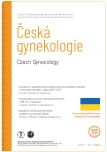Stepwise molecular-genetic examination in aborted fetuses
Authors:
Trková M.; Prokopcová L.; Bakardjieva-Mihaylova V.; Němec M.; Borgulová I.; Vilímová Z.; Dohnalová L.; Bečvářová V.; Bittóová M.; Horáček J.; Stejskal D.; Koudová M.
Authors‘ workplace:
Centrum lékařské genetiky a reprodukční medicíny, Gennet s. r. o. Praha
Published in:
Ceska Gynekol 2022; 87(2): 104-110
Category:
Original Article
doi:
https://doi.org/10.48095/cccg2022104
Overview
Objective: The evaluation of quantitative fluorescence PCR (QF-PCR) and single nucleotide polymorphism array (SNP array) analysis for the identification of chromosomal abnormalities in products of conception (POC). Materials and methods: A total of 1,094 POC samples were processed at Gennet in the years 2018–2020. Chromosomal aneuploidies were tested by QF-PCR using a Omnibor set (STR markers 13, 18, 21, X a Y), SAB-I set (STR markers 2, 7, 15, 16, 22), SAB-II set (from November 2019, STR markers 4, 6, 14) followed by SNP array analysis (Illumina) on samples with a negative QF-PCR result. All POC samples were tested for maternal contamination. Results: After exclusion of maternal contamination (32% samples) the total number of 742 POC samples were tested by QF-PCR. Chromosomal aneuploidies were found in 273 POC samples (36.8%). Then, 469 QF-PCR negative POC samples were tested by SNP array analysis. Normal female/male profile was confirmed in 402 samples (85.7%) and chromosomal aneuploidies and chromosomal aberrations (deletion/duplication > 10 Mb) in 51 samples (10.9%). Microdeletion/microduplication was found in 16 POC samples (3.4%), two were classified as pathogenic variants and 14 as variants of unknown significance. In a group of women > 35 years of age, statistically significant increase of the chromosomal abnormalities was confirmed. No statistically significant difference between the in vitro fertilization group and the group of spontaneous conception was found. Conclusion: The application of the molecular work-up based on the stepwise use of QF-PCR and SNP array clarifies the cause of the abortion in 43% POC samples. The overall detection rate in the I. trimester was 50.4%.
Keywords:
Aneuploidy – aborted fetus – QF-PCR – SNP-array – chromosomal aberration
Sources
1. Rai R, Regan L. Recurrent miscarriage. Lancet 2006; 368 (9535): 601–611. doi: 10.1016/ S0140-6736 (06) 69204-4.
2. Larsen EC, Christiansen OB, Kolte AM et al. New insights into mechanisms behind miscarriage. BMC Med 2013; 11 : 154. doi: 10.1186/1741 - 7015-11-154.
3. Menasha J, Levy B, Hirschhorn K et al. incidence and spectrum of chromosome abnormalities in spontaneous abortions: new insights from 12-year study. Genet Med 2005; 7 (4): 251–263. doi: 10.1097/01.gim.0000160075.967 07.04.
4. Trková M, Putzová M, Bečvářová V et al. Implementation of arrays in first trimester prenatal diagnosis. Ceska Gynekol 2015; 80 (3): 176–180.
5. Massalska D, Zimowski JG, Bijok J et al. First trimester pregnancy loss: clinical implication of genetic testing. J Obstet Gynaecol Res 2017; 43 (1): 23–29. doi: 10.1111/jog.13179.
6. Choi TY, Lee HM, Park WK et al. Spontaneous abortion and recurrent miscarriage: a comparison of cytogenetic diagnosis in 250 cases. Obstet Gynecol Sci 2014; 57 (6): 518–525.
7. Christiansen OB, Steffensen R, Nielsen HS et al. Multifactorial etiology of recurrent miscarriage and its scientific and clinical implications. Gynecol Obstet Invest 2002; 66 (4): 257–267. doi: 10.1159/000149575.
8. Andersen AM, Wohlfahrt J, Christens P et al. Maternal age and fetal loss: population based register linkage study. BMJ 2000; 320 (7251): 1708–1712. doi: 10.1136/bmj.320.7251. 1708.
9. Grande M, Borrell A, Garcia-Posada R et al. The effect of maternal age on chromosomal anomaly rate and spectrum in recurrent miscarriage. Hum Reprod 2012; 27 (10): 3109–3117. doi: 10.1093/humrep/des251.
10. Kushnir VA, Frattarelli JL. Aneuploidy in abortuses following IVF and ICSI. J Assist Reprod Genet 2009; 26 (2–3): 93–97. doi: 10.1007/ s10815-009-9292-z.
Labels
Paediatric gynaecology Gynaecology and obstetrics Reproduction medicineArticle was published in
Czech Gynaecology

2022 Issue 2
Most read in this issue
- Hymenal atresia – a rare congenital anomaly with the risk of late diagnosis
- Current data on the efficacy of prophylactic HPV vaccination in the primary prevention of cervical lesions
- Assisted reproduction in patients with Klinefelter syndrome
- Maternal mortality in the Slovak Republic in the years 2007–2018
